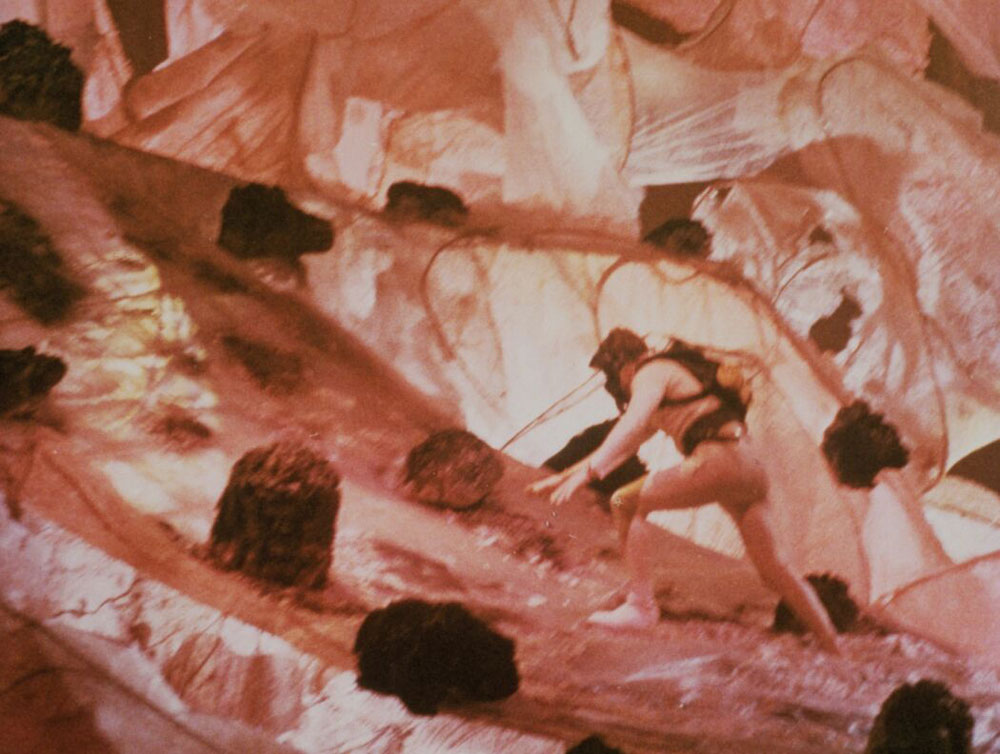
(C)2017 Twentieth Century Fox Home Entertainment LLC. All Rights Reserved.
``Fantastic Voyage'' A science fiction masterpiece of outstanding quality from the 1960s before ``2001: A Space Odyssey'' (Part 1)
2021.03.10
production design inside the body
Dale Hennessy , another art director, was in charge of the design inside the human body (*2). His representative works include comedies such as ``Yum Yum Girl'' (63) and `` Lend Me a Little Master '' (64), and it was a wise decision on the part of the producers to select him for such a blockbuster. Perhaps his concept art work for `` The King and I '' (56) and `` South Pacific '' (58), in which he participated uncredited, was highly praised.
Prior to this film, there had been no footage depicting human tissue from the inside, so it must have been an extremely difficult task. Useful materials include anatomical photographs and illustrations derived from them (*3), models of various organs, electron micrographs (monochrome) of tissues, and transmission micrographs of stained sections.
Based on these materials, Hennessy drew an enormous amount of concept art of the body's internal world, magnified approximately 5 million times.
I've been doing this kind of scientific CG work for many years, so I can understand this from my experience, but it's not that easy. It goes without saying that cinematic elements such as ``Where does light come from and in what color?'' and ``Is there a space to set up a camera and perform a play?'' The work pioneered unexplored territory, such as the balance between "physical accuracy and abstract design" and the "selection of distinctive shape designs and modeling materials that visually tell where the characters are currently in the body." I am truly humbled by this.
In the case of an explanatory video for a science documentary, an easy-to-understand, schematic design is allowed, but in a case like this one, that is not possible. That's why a production designer's sense is required to assess the level of reality.

“Fantastic Voyage” (C)2017 Twentieth Century Fox Home Entertainment LLC. All Rights Reserved.
In reality, most of the tissues in the body are filled with body fluids and collagen , and only a small amount of light reaches them, so it is impossible to see very far. However, if the film fails to depict the grandeur of humans shrinking down and exploring an unknown world, it will lose its appeal as a movie.
When this film was released, it was in the middle of the widescreen heyday, and roadshow theaters around the world were competing on screen size and viewing angle. Therefore, having a panoramic view extending to every corner of the CinemaScope screen was an important element of the entertainment films of this era, and there was no need for the realism of filming with an endoscope. .
Laszlo was involved from the early stages of the project, discussing materials for the set with Hennessy. Laszlo's idea was to build the set out of colorless, translucent materials such as fiberglass and acrylic. The reason for this is that painting directly with paint would kill the atmosphere of the living tissue, so it was determined that this could be avoided by coloring it with lighting. Laszlo avoids the screen from becoming monotonous by changing the lighting tone for each part of his body, not just red, but blue, cyan, purple, green, yellow, etc.
*2 Misinformation is spreading that Salvador Dali was in charge of the design inside the human body. This is a misunderstanding that arose from the fact that Dali was commissioned to create promotional art for the film. He painted a painting (gouache, watercolor) called ``Fantastic Voyage'' (original title of the movie) in 1965, and there is a small woman modeled after Raquel Welch in the lower right corner, but it is different from the image of the movie. was far apart. The original painting is owned by art collector Jose Mugrabi, and the lithograph is still available for purchase .
*3 Actually, these illustrations are quite unreliable. In 1988, as part of my CG work for IMAX 3D at EXPO90, I researched a huge amount of books on muscle cells. Then, by copying the illustrations published in those books and arranging them side by side, I was able to trace things like, ``This picture was copied from here...'' As a result, they realized that the diagram that was supposed to be a human myofibril was originally from a rabbit, and they were able to avoid repeating the mistake. In the end, I decided to start by having new microscopic photographs taken for reference purposes.

